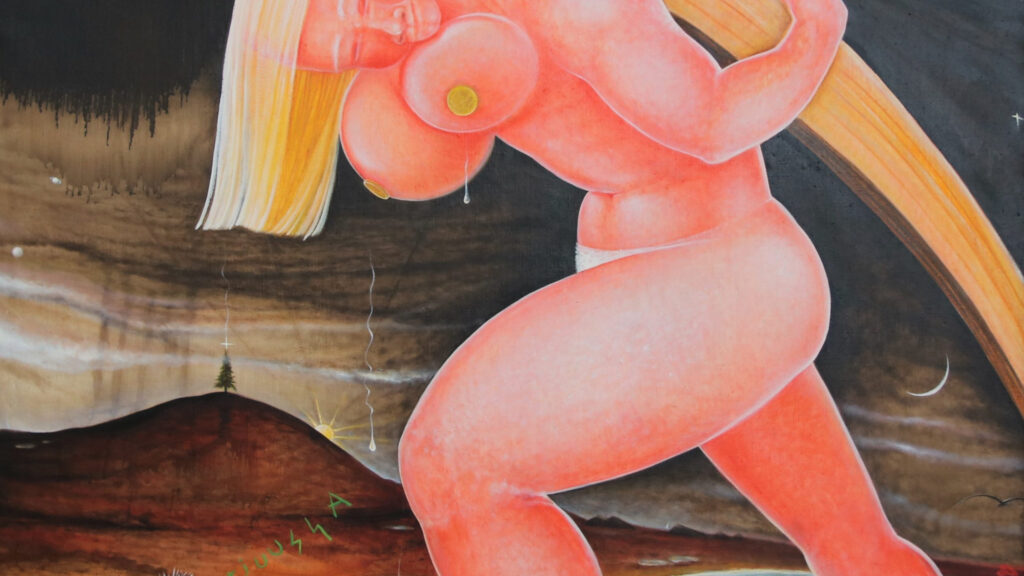The exhibition seeks to explore how the position of women is reflected in Estonian art. It gives an art lover the task to consider whether an Estonian woman, in turn, has two opposites – power and spirit – in a reasonable balance.
The male gender is represented in the exhibition mainly as mythological-animalistic figures. For example, Zeusina, the chief god of the Greeks, who meets Leda as a swan. This myth is surprisingly richly enlightened in Estonian art. Canalist Erich von Kügelgen and expressionist Lilian Mosolainen on canvas, Anton Starkopf on wood sculpture, Eduard Wiiralt on wood carving, Jüri Arrak in both painting and graphics. The works of Jaak Arro and Kersti Rattuseg, who appeared in our art life during the mythical lives in the 1980s, bring a mystical soul to the exhibition hall with swans and wolves. Not to mention Lembit Sarapuu, whose ancient world intertwines the bodies of Estonian women with those of a bear, a cow and a wild boar. Traditions from distant times, when gender roles were not discussed, live on in all of them.
In his work, the Estonian painting classic Eerik Haamer has lifted a woman to the pedestal as a mother, a hard worker and a seductively mysterious creature. On one canvas of a hammer, naked islanders wash sheep, on the other naked townspeople play cards. The mystery is especially evident in Jüri Palm’s painting “Staying in the White Light”, where blue twilight combines three views of nudes. In addition to the feminine charm, Tiit Pääsuke has also conveyed a subtle feminine intellect in his portraits. Peeter Mudist draws pure light and pure joy from being together from the painting “There is a code in the light” and his “Little Flyer” makes you think that there are often more memorable seemingly insignificant things in life. One of the rarities of the exhibition is Kris Lemsalu’s gift to Tiit Pääsuke. The gift consists of the skull of an animal painted by Lemsalu and the artist’s silk stockings. In response to Lemsalu, Swallow also painted a skull and a quarter of it inside – a portrait of an extravagant artist without a mask!
Gallery name: The Museum of New Art
Address: Esplanaadi 10, Pärnu
Opening hours: Mon-Sun 09:00 - 17:00
Open: 06.06.2021 - 29.08.2021







